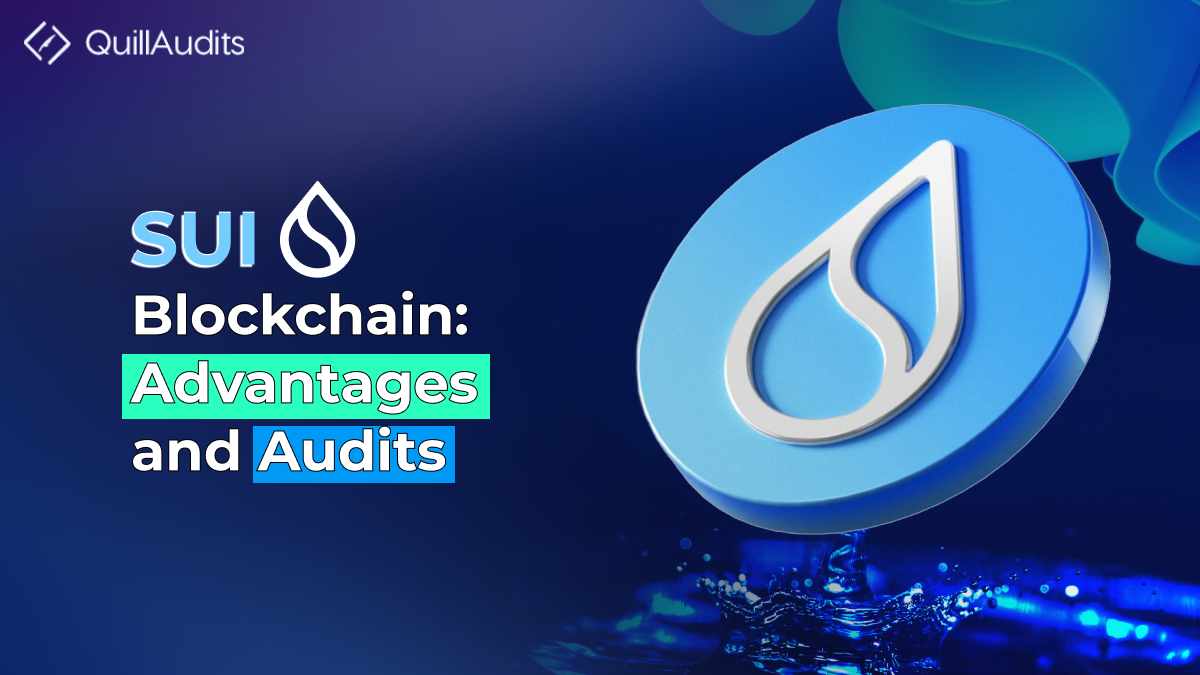Since Bitcoin became a thing, we have seen many blockchains come and go. The one that has established its dominance over the years is Ethereum; it is not an easy job for a blockchain to survive this market if it does not propose good value in return. This is the reason most of the chains do not make it big.
But some chains make it big by creating something of their own or improving an existing blockchain like Polygon. Today we will learn more about a blockchain making headlines in the industry. Let’s dive into the SUI blockchain.
What is the SUI blockchain?
You must have heard about SUI blockchain if you follow the latest updates in the blockchain industry. It is a new permission-less layer 1 smart contract blockchain which keeps scalability and low-latency tasks at the center of its working, and this is attainable because of the SUI blockchain’s design to process transactions in parallel, making it more efficient in processing resources and allowing for the seamless addition of more resources to increase throughput.
Have you heard of Rust? No, not the metal one, a programming language. That’s what was used in creating the SUI blockchain, and the language used to develop smart contracts for the SUI blockchain is called Move, a Rust-based programming language. Facebook originally developed the move for the Diem blockchain. The main speciality is the ability to design and conduct safe operations over them. Move’s special data model is the main reason behind Sui’s high-performance capabilities. This allows Sui to execute and commit transactions in parallel, which is impossible in the EVM data model because of the dynamic index maps model for asset storage.
Architectural study
The architecture of the SUI blockchain is a unique work of art. There are three main aspects of the architecture:-
1. Objects:- The Move language enables the SUI blockchain to have programmable objects categorized in mutable data values and immutable packages. A single address owns each object, and each address can own an arbitrary number of objects.
2. Transactions:- This term would be very familiar if you understand the Web3 workflow. The Transactions describe the changes and the updates made to the SUI ledger.
3. Validators:- The most important part of the SUI blockchain, Independent validators are the sole driver of the Sui Network. The concept of validators has been introduced previously. Each validator runs its instance of the Sui so no software on a separate machine.
Advantages over others
In this blog section, let’s discuss the key differences that make SUI a better candidate than many other blockchains.
- Privacy:- One of the very important and crucial topics for people who value anonymity, people falling under this category are completely safe regarding private transactions. No third party can view the transaction details. This is possible using zk-SNARKs, a form of zero-knowledge cryptography that allows for anonymous transactions.
- Scalability:- A hot topic, humans always try to achieve that little more. Scalability is just like that. We always want more efficiency in our transactions. This is where the SUI blockchain gets creative by implementing a mechanism of parallel processing transactions, which differs from the series-type execution of trades. On top of that, there is no need to undergo consensus for simple transactions which result in near-infant finality.
- Interoperability:- SUI is also designed to be interoperable. One of the parameters to judge a blockchain is its interoperability with other blockchains, which essentially means how seamlessly it can communicate and exchange data with the other blockchain networks.
- Energy Efficient:- A major factor on which blockchains are judged is how environmentally friendly is it (or) on what scale is it affecting the environment. Being an environmentally friendly blockchain, the SUI platform uses a proof-of-stake mechanism, saving workload compared to the proof-of-work mechanism.
Blockchain Audits
Auditing is an important aspect of every blockchain and essential to ensure the security and reliability of any blockchain network. Sui is no different when it comes to the fact that any new technology is vulnerable to the ever-evolving attack vectors and the scale and scope of attack vectors continuously gets bigger and wider with time. Like every other blockchain SUI follows some extensive methods and modes of smart contract auditing, let’s discuss a few of them:-
- Automated Smart Contract Auditing:- As we move towards a more AI-oriented society, AI tools have also found their way into smart contract auditing. These tools can check for potential vulnerabilities and other issues in smart contracts.
- Third-Party Auditing:- One of the most crucial auditing processes to go through, this is the step which defines the success of your project. Without going for an external audit, one can never be sure about the security of your pool, and if you cannot guarantee safety, there will be no users. Users nowadays are smart and understand the need for auditing; thus, every protocol needs to get a good auditing report to showcase.
- Community Auditing:- Community also plays a good role in making the chain risk-free, the community plays a role in auditing and maintaining the network, and the members report potential security issues and help to identify vulnerabilities.
Conclusion
The SUI blockchain sure has something to look out for. How successful and mainstream it will be is still a question that will be answered as more and more people start building over the chain. And many have already begun building over it. It is common to get such attention this quickly. Keeping the potential in mind, QuillAudits has started auditing services for the SUI blockchain.
QuillAudits, one of the major players in smart contract auditing, has now set foot in the SUI’s smart contract audits. You can build over SUI without worrying about security, as QuillAudits got your back. We are just a message away, do not forget to check our website and go for an audit to help us keep you and Web3 safe.
83 Views

